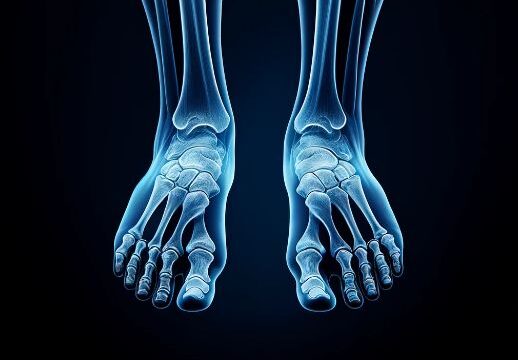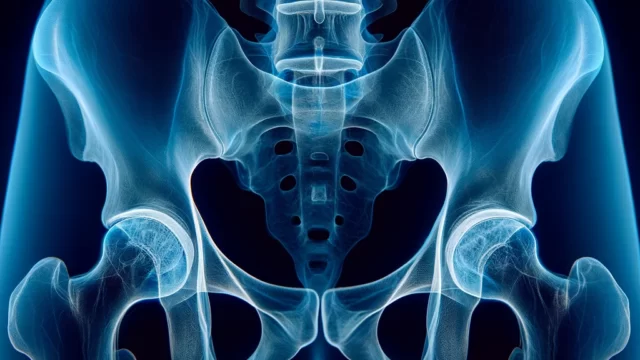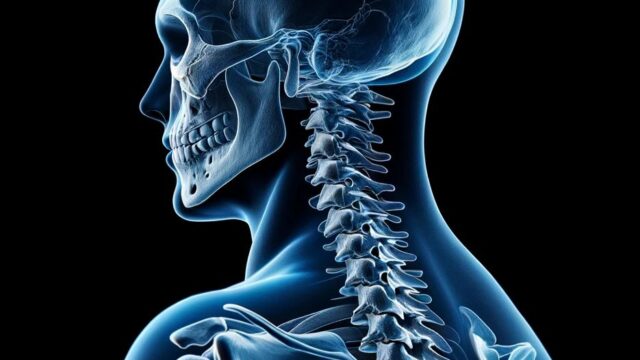Pelvis AP view
Purpose
Diagnosis of dislocation, bone destruction, and external injuries (In the case of a fracture of the acetabulum, oblique imaging is performed).
The severity and treatment approach vary depending on the presence or absence of pelvic ring disruption.
Pelvic ring fractures often involve bleeding and internal organ damage.
Prior confirmation
Confirm the purpose of the examination.
For emergency imaging, ensure there is no risk of fractures or dislocations, and consult the physician about the permissibility of internally rotating the lower limbs.
Remove any obstructing objects.
Positioning
Supine.
Align the mid-sagittal plane with the central axis of the cassette.
If possible, internally rotate the knee joint by 20° to project the femoral neck widely. Secure if necessary using weights.
Ensure that the pelvis faces forward, and the left and right anterior superior iliac spines are at the same height on the film. If the pelvis is not in the correct position, it will cause asymmetry and make the diagnosis difficult.
Keep both arms away from the imaging area.
On the mid-sagittal plane, place the cassette’s center three finger-widths above the greater trochanter in the headward direction.
Place an RL marker.
CR, distance, field size
CR : Perpendicular incidence towards the center of the cassette.
Distance : 100-130 cm.
Field size : Narrow down the field to include the skin surface on both sides and the area from the iliac crest to the lesser trochanter.
Exposure condition
75kV / 20mAs (or use 90 kV or higher for dose reduction).
Grid (+)
Full expiration.
Image, check-point
Normal (Radiopaedia)
Ensure that the area from the 5th lumbar vertebra to the lesser trochanter is included.
Confirm that the pelvis is properly aligned (symmetric appearance of the ilium, ischial spine, and obturator foramen).
Check if the greater trochanter is depicted symmetrically. If the lower limbs are adequately internally rotated, the lesser trochanter will be minimally visible.
The sacral ridge should be visible.
Ensure that the greater trochanter is visible without being overexposed.
Ensure that soft tissues are visible.
There should be no motion blur.
Videos
Related materials
Fracture patterns (The red arrows indicate the direction of the applied force).














